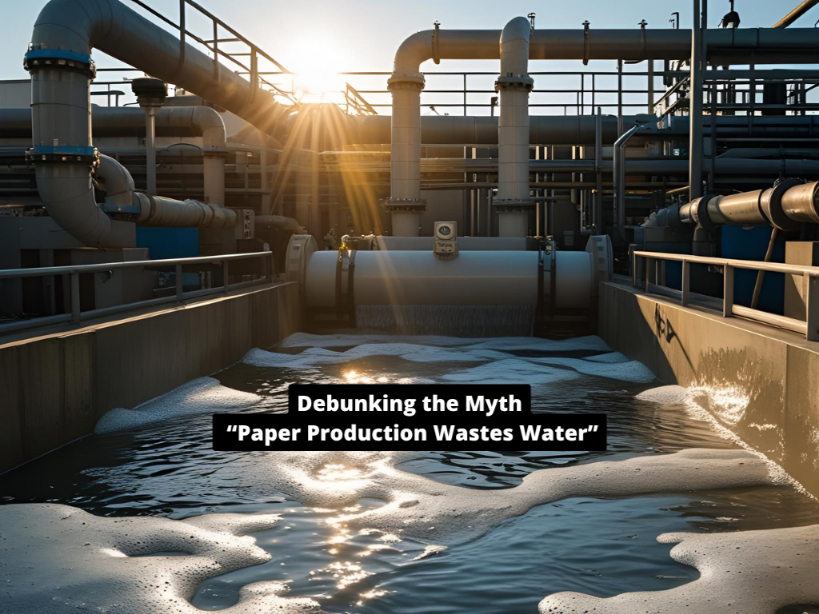Debunking the Myth: “Paper Production Wastes Water”
The pulp and paper industry undeniably relies on water, but it’s time to debunk the myth that it’s a heavy consumer of this precious resource. Water plays a vital role in three key areas of paper production: sustaining tree growth, transforming wood into pulp and paper, and managing effluent. However, the industry has made significant strides in reducing and efficiently using water.
Nature’s Contribution: Rainwater and Tree Growth
The first and perhaps most natural source of water in the paper production process is rainwater. Trees, the primary source of wood fiber for paper, rely on rainwater to grow. Through photosynthesis, trees convert carbon dioxide into oxygen and cellulose, the essential raw material for the pulp and paper industry.
Water Usage in Paper Production
Next, water is essential in the actual production of pulp and paper. Most pulp and paper mills are strategically located near abundant water supplies. In Europe, a staggering 87% of water intake for mills comes from surface water sources such as rivers and lakes, 12% from groundwater, and only 1% from public water supplies. Impressively, since the 1990s, the average water intake per tonne of paper has decreased by 42%.
Water Circulation and Treatment
A crucial point often overlooked is that water intake does not equal water consumption. In 2021, approximately 90% of the water used in the European paper industry was returned to its source. This water was reused within the mill multiple times before being treated and released. The remaining water either evaporated, stayed within the product, or was bound in solid waste.
Before being returned to the environment, water used in mills is treated to remove nutrients and organic matter. Techniques like filtration, sedimentation, flotation, and biological treatment ensure that the water is cleaned effectively.
Dramatic Improvements in Effluent Cleanliness
Advancements in papermaking techniques and water treatment have dramatically improved the cleanliness of effluent from mills. Since 1991, there has been a 95% reduction in AOX levels (a measure of chlorine compound toxicity) and a 79% reduction in COD (Chemical Oxygen Demand, indicating the oxygen needed to decompose organic matter).
Forests: The Guardians of Water Security
Forests, crucial to water security, play a significant role in regulating the water cycle, sustaining water supplies, and maintaining water quality. Forested watersheds provide approximately 75% of accessible freshwater and supply water to over 85% of the world’s largest cities.
The pulp and paper industry’s reliance on water is undeniable, but its efficiency in using and returning water to the environment is impressive. By continually improving water management and treatment processes, the industry not only ensures sustainable paper production but also supports global water security. Stay updated with Coniferous for more insights and innovations in the paper industry. 🌲💧


